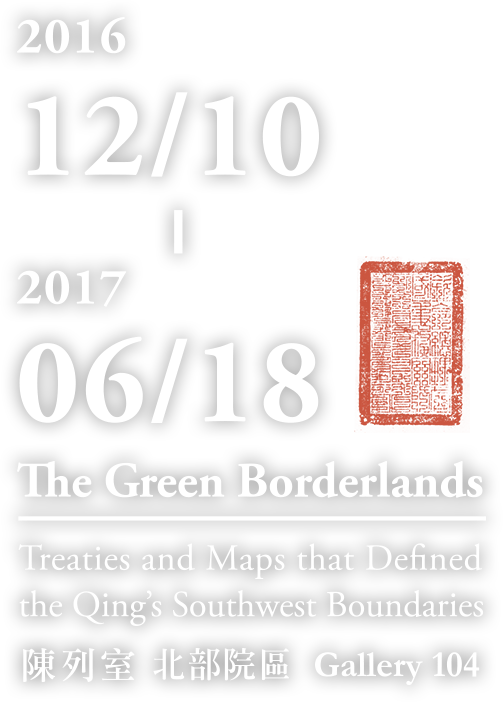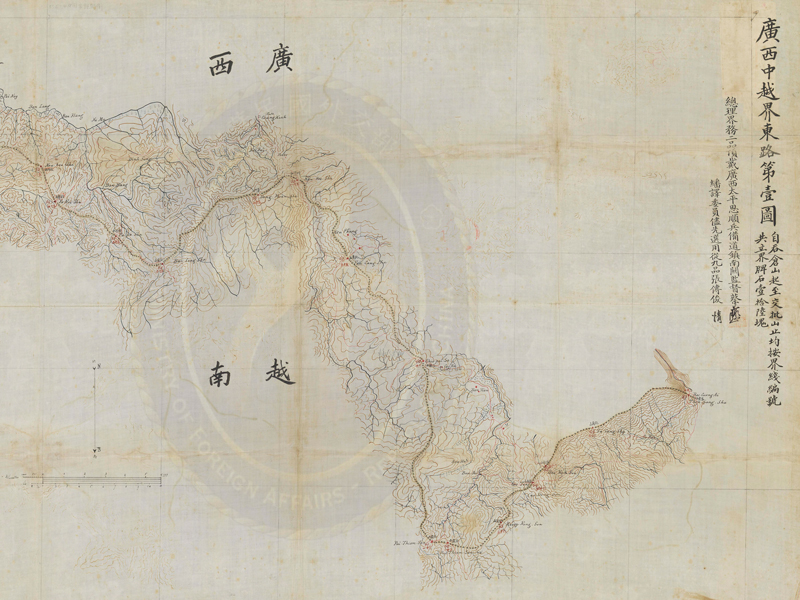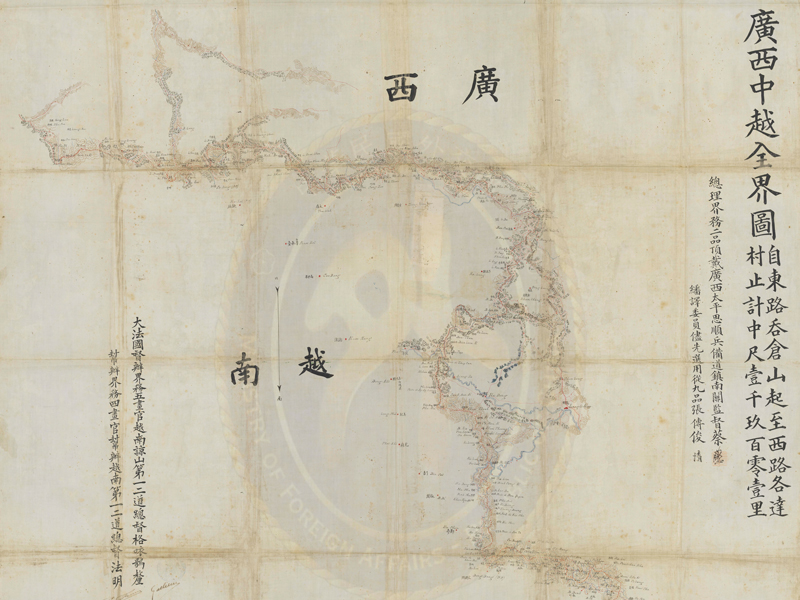The Chief Minister Deng Chengxiu (1841-1892) of the Office of Diplomatic Reception and the French commissioner for border survey Charles Dillon (n.d.) signed an agreement in Móng-cái on Sino-Vietnamese border demarcation between Guangdong's Tchŏu-chan (Trúc-son) and Guangxi's Ko-ta-cheng, and produced four preliminary maps for the four sections stipulated in the agreement. Though both sides determined their respective borderlines in accordance with the maps, the signed agreement only provided brief accounts of the borders, which did not fully reflect the actual geographic and topographic features. As for the erection of border signposts, disagreements persisted between the two sides. It was not until the 7th month in the 16th year of the Guangxu Reign (1890) that France dispatched Hippolyte Frandin (1852-1924) as the representative in charge of negotiating border signposting, while the Qing court assigned Prefect Xiang Wanheng (n.d.) of the Wuzhou Prefecture and Intendent Cai Xibin (1832-1900) of the Taiping Sishun Circuit to the tasks of erecting signposts along the Sino-Vietnamese border in eastern and western Guangxi, from the Thên-sang-shā Mountain to Bi-nhi and between Bi-nhi and Ko-ta-cheng, respectively.
Map of the Sino-Vietnamese Border in Eastern Guangxi (No. 1)
- 20th year of the Guangxu reign, Qing dynasty (1894)
- 61 x 97.5 cm
Comprehensive Map of the Sino-Vietnamese Border in Guangxi
- 20th year of the Guangxu reign, Qing dynasty
- 95.5 x 106.5 cm



